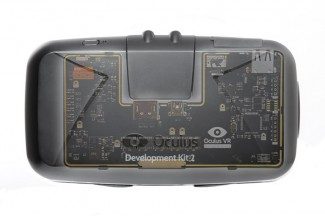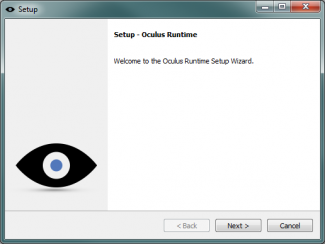 After delaying the shipment of the first batch of Oculus Rift DK2 units, to afford an extra week of SDK polish, Oculus VR has now made available the latest version of the Rift SDK. The new Oculus SDK 0.4.0 beta adds the all-important positional tracking support, a separate Oculus Runtime package, and more.
After delaying the shipment of the first batch of Oculus Rift DK2 units, to afford an extra week of SDK polish, Oculus VR has now made available the latest version of the Rift SDK. The new Oculus SDK 0.4.0 beta adds the all-important positional tracking support, a separate Oculus Runtime package, and more.
After announcing the Oculus Rift DK2 back in March, Oculus VR put out several preview builds of the SDK that would support the new VR headset. While these previews made significant improvements, they lacked support for the Rift DK2’s positional tracking capability. Now the Oculus SDK 0.4.0 is released with a ‘beta’ tag and is ready for developers to start building and updating games and software for the DK2. The timing is just right as the earliest production units have already been delivered.
See Also: Oculus Rift SDK v0.3.1 Preview: John Carmack’s Timewarp, Improved Distortion, and More
Here are the patch highlights for the Oculus SDK 0.4.0 beta:
- Added DK2 Positional Tracking support.
- Introduced Oculus Runtime that is installed separately from the SDK. Runtime package includes the Oculus Config Utility, service and drivers.
- Introduced Oculus Display Driver under Windows that routes rendering output directly to the headset, with an option of mirroring it in a window.
- Added Health and Safety Warning screen that should be displayed on application start-up.
 Full patch notes can be found here in the Oculus Developer Center (requires login). The new SDK can also be downloaded from the Oculus VR Developer Center (requires login).
Full patch notes can be found here in the Oculus Developer Center (requires login). The new SDK can also be downloaded from the Oculus VR Developer Center (requires login).
So far the new SDK is only available for the Windows operating system and the only game engine integration currently released is for Unity. However, Epic appears to be building Oculus integration directly into EU4. Hopefully they will update soon with changes from the new SDK. In the Oculus Developer Guide, updated for the 0.4.0 beta, Mac and Linux sections are listed as “coming soon,” and that presumably applies to versions of the Oculus SDK for those operating systems.
Additionally, Oculus has updated their Best Practices Guide with a new section on positional tracking as well as the Oculus User Guide and Health and Safety Warnings document.
A separate ‘Oculus Runtime’ package is now required to work with the SDK and the DK2. The package includes the Oculus Config Utility, service, and drivers. Andres “cyberreality” Hernandez, Oculus VR’s Community Manager, elaborates on the Oculus Runtime, including a new display option which reportedly reduces latency.
The biggest new addition is the introduction of the Oculus Runtime, a separate download from the SDK that needs to be installed by end-users prior to using the device. The Oculus Runtime includes the Oculus Config Utility, a background service process and the necessary drivers for both the headset and camera. Some of the benefits of the new runtime include allowing multiple applications to interface with the Rift simultaneously, easier access for changing settings and a better user experience.
We are also introducing the Oculus Display Driver for the Windows platform, which streamlines access to the Oculus Rift screen. This new feature allows direct rendering to the Rift itself instead of treating the headset as a regular monitor. This optional approach reduces latency and avoids the complications of Windows monitor settings. The driver also supports a new SDK feature: the Oculus Rift screen can be mirrored to a window on an external monitor.







